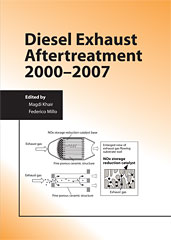Journal Article
Transient, Three Dimensional CFD Model of the Complete Engine Lubrication System
2016-04-05
2016-01-1091
This paper reports on a comprehensive, crank-angle transient, three dimensional, computational fluid dynamics (CFD) model of the complete lubrication system of a multi-cylinder engine using the CFD software Simerics-Sys / PumpLinx. This work represents an advance in system-level modeling of the engine lubrication system over the current state of the art of one-dimensional models. The model was applied to a 16 cylinder, reciprocating internal combustion engine lubrication system. The computational domain includes the positive displacement gear pump, the pressure regulation valve, bearings, piston pins, piston cooling jets, the oil cooler, the oil filter etc… The motion of the regulation valve was predicted by strongly coupling a rigorous force balance on the valve to the flow.

